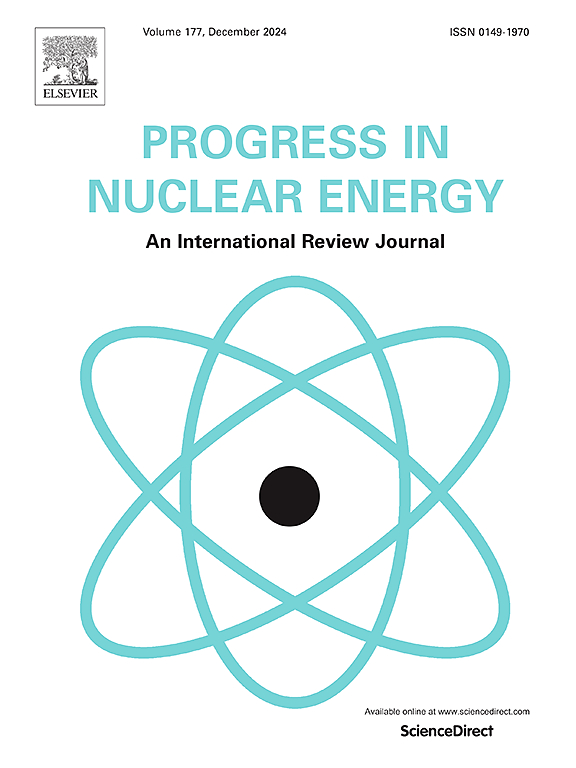Experimental study on the influence of gas injection on flashing in open natural circulation systems under stable boundary conditions
IF 3.3
3区 工程技术
Q1 NUCLEAR SCIENCE & TECHNOLOGY
引用次数: 0
Abstract
As an efficient passive heat exchange system, natural circulation systems are widely used in various fields, including passive containment cooling system in nuclear power plants. Flashing is the most common two-phase flow state in natural circulation systems. To enhance the circulation capacity and stability of natural circulation systems, this study conducts experiments on the effects of gas injection on flashing two-phase flow using water and air as mediums. The research analyzes the impact of different gas injection positions and volumes on the flow rate, flow pattern, flow instability, and void fraction of the flashing flow. The results indicate that gas injection enhances the circulation flow rate of the loop and improves system stability. The further the gas injection position is from the upstream of the flashing point, the better the enhancement effect on the circulation flow rate. As the gas injection volume increases, the circulation capacity of the loop strengthens; however, once a certain injection volume is reached, the circulation capacity no longer increases, with a maximum enhancement of up to 80% in circulation flow rate. The introduction of gas injection leads to significant fluctuations in the axial distribution of the void fraction in the rising section, but has a negligible effect on the bubble fraction at the exit of the rising section. The paper analyzes the pressure drops and driving force fractions in the rising section before and after gas injection, and presents the mechanisms by which different gas injection positions and amounts affect the flow in the loop. These findings provide important insights for enhancing and stabilizing natural circulation systems, contributing to improved design and operation of passive safety shell cooling systems.
求助全文
约1分钟内获得全文
求助全文
来源期刊

Progress in Nuclear Energy
工程技术-核科学技术
CiteScore
5.30
自引率
14.80%
发文量
331
审稿时长
3.5 months
期刊介绍:
Progress in Nuclear Energy is an international review journal covering all aspects of nuclear science and engineering. In keeping with the maturity of nuclear power, articles on safety, siting and environmental problems are encouraged, as are those associated with economics and fuel management. However, basic physics and engineering will remain an important aspect of the editorial policy. Articles published are either of a review nature or present new material in more depth. They are aimed at researchers and technically-oriented managers working in the nuclear energy field.
Please note the following:
1) PNE seeks high quality research papers which are medium to long in length. Short research papers should be submitted to the journal Annals in Nuclear Energy.
2) PNE reserves the right to reject papers which are based solely on routine application of computer codes used to produce reactor designs or explain existing reactor phenomena. Such papers, although worthy, are best left as laboratory reports whereas Progress in Nuclear Energy seeks papers of originality, which are archival in nature, in the fields of mathematical and experimental nuclear technology, including fission, fusion (blanket physics, radiation damage), safety, materials aspects, economics, etc.
3) Review papers, which may occasionally be invited, are particularly sought by the journal in these fields.
 求助内容:
求助内容: 应助结果提醒方式:
应助结果提醒方式:


